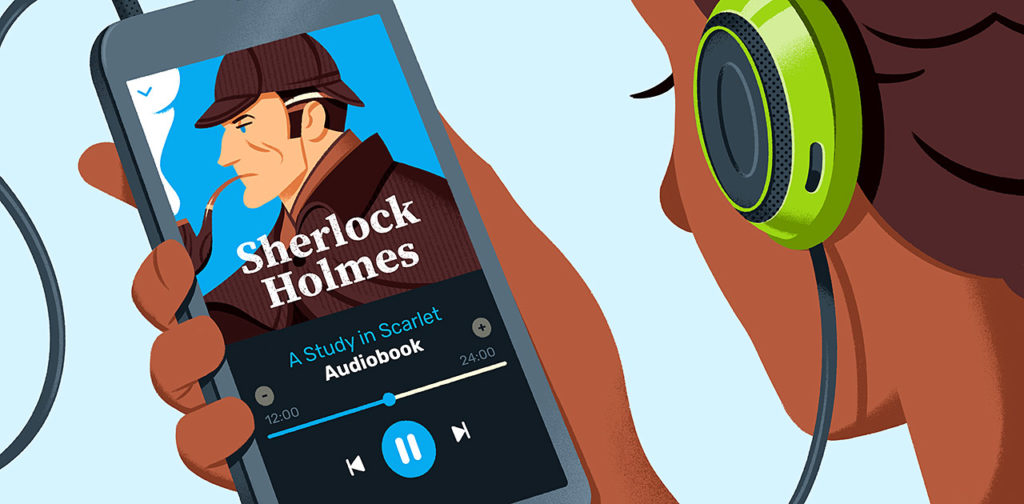Audiobooks are voice recordings of books that people can listen to instead of reading a traditional book. Listening to audiobooks can help readers of all ages, people who may be visually-impaired, and people with reading disabilities, such as ADHD or dyslexia, consume and enjoy literature.
Audiobooks benefit all readers
Audiobooks align with the social model of disability, in that audiobooks enable people who may be visually-impaired and people who may have reading disabilities to listen to captivating stories, discover new literature, and enjoy the wonders of reading.
For younger readers with reading disabilities, audiobooks can help them improve their vocabulary and reduce reading barriers. It may be difficult for readers with ADHD or dyslexia to focus on a printed book, and audiobooks offer an alternative way for them to enjoy reading. Audiobooks can help students, especially those who are auditory learners, process information in a way that helps them learn better as well.
Readers who may be visually-impaired can also use audiobooks to read for fun and continue learning throughout their lives. A study done by Loughborough University revealed that 95% of their visually-impaired participants read books for pleasure more than once a week, and that they typically read to learn new things, gain insights into other people’s lives and cultures, and release stress.
Audiobooks provide an immersive reading experience
While other assistive technologies for reading include text-to-speech software and Braille books, audiobooks offer more advantages for an engaging reading experience.
Braille is a system of writing for people who are visually impaired. Books written in Braille use combinations of raised dots, which represent letters, numbers, and punctuation marks, and are read by touch. Braille books are bulkier than their printed counterparts, require lots of storage space, and are more costly to produce. Audiobooks, on the other hand, are much cheaper and easier to access and many audiobooks are available at public libraries or on the Internet for free. In addition, audiobooks are not as expensive to produce, as once they are recorded, they can be shared with an unlimited number of listeners without incurring additional costs.
Text-to-speech software utilizes a computer-generated voice that speaks aloud digital text such as books, news articles, magazine articles, and websites. However, the computer-generated voice may pronounce words incorrectly, pause in places that don’t make sense, and read in a tone or emotion that is out-of-place. Audiobooks are typically narrated by professional narrators and include correctly pronounced words, natural pauses, and appropriate tone and emotion.
Audiobooks allow readers to read anywhere at any time
Audiobooks also align with the functional solutions model of disability, as businesses and organizations realize the needs of people who may have visual impairments or reading disabilities and develop audiobooks and other assistive reading technologies to help them overcome obstacles to reading. In fact, audiobooks were originally developed in 1931 to provide reading material for veterans injured during World War I and other adults with visual impairments.
With advances in modern day technology, audiobooks can be loaded up onto an MP3 player, a smartphone, an ereader, or other portable device, allowing readers the convenience to take their books and read them wherever they go. As storage limits increase for electronic devices, people are able to store more MP3 files for audiobooks on their devices, and gain access to even more books.
As the software for audiobooks advances, the reading experience is also enhanced as well. Some newer versions of audiobooks can sync the recording to digital text, allowing readers to hear words read and follow along with highlighted text on a screen.
Audiobooks are a fantastic alternative to traditional reading, and provide an immersive and engaging storytelling experience for the reader. They are accessible and convenient, and enable readers of all ages, people with visual impairments, people with reading disabilities, and anyone to enjoy reading.
